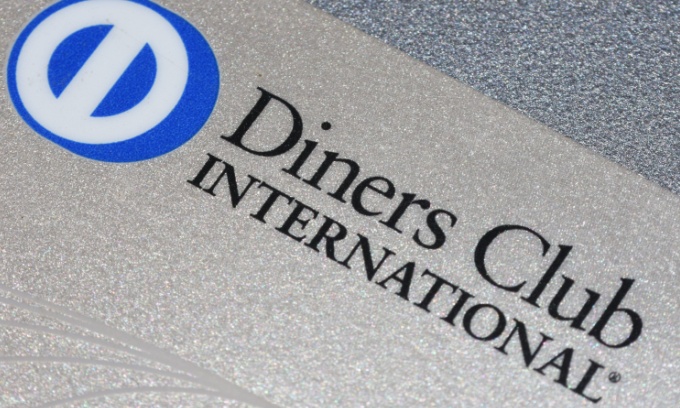Editors note: Diners Club Australia ceased operations on 20 October 2024. The information presented in this article is for historic purposes and may no longer apply.
Visa and Diners Club are two popular payment networks, but there are a few key differences between the two. Although both are payment networks, Visa and Diners Club are quite different on many levels. Below are the main differences:
Diners Club
- A payment system as well as a ‘direct banking’ company, according to Diners Club.
- Issues cards directly to consumers, finances payments and processes the transfers.
- Charge cards are the only cards that Diners Club offers. Charge cards have no pre-set spending limit and customers must pay off the full balance on the card each month or they will be charged a fee.
- Diners Club determines the card’s features and rewards structure.
Visa
- A digital payment processing system but does not issue cards.
- Does not issue cards directly to consumers, but allows financial institutions to brand their card products as ‘Visa’ and use the Visa network.
- Credit cards, debit cards, prepaid cards and gift cards can all be branded as Visa.
- The issuing financial institution determines the card’s features and rewards structure.
Where are Visa and Diners Club cards accepted?
Visa says its cards are accepted at more than 100 million merchant locations in over 200 countries and territories worldwide, and says it accounted for 230 billion total transactions in the past year.
Diners Club says it’s accepted at millions of merchant locations as well as having millions of cash access locations and ATMs in over 200 countries and territories. It’s important to note that Diners Club no longer operates within Australia and you may find it difficult to use a foreign Diners Club card within the country.
Is Visa or Diners Club better for rewards programs?
Both Visa and Diners Club provide their cardholders opportunities to earn Rewards Points and other potential features.
Visa
There are two types of rewards programs that a Visa card holder may be able to access.
- Visa-network rewards program: Depending on the Visa credit card, Visa states that its rewards program could offer cardholders a range of discounts and deals on food, music, sport, fashion, film and more. Visa also offers a Visa Concierge service (to eligible users), which it describes as a 24/7 digital personal assistant and lifestyle guide, and allows you to self-book your travel and holiday activities. You may also receive additional rewards and benefits, depending on the specific Visa card and card provider.
- Card-issuer rewards programs: Some Visa credit cards are linked to other rewards and frequent flyer programs (such as Qantas and Velocity), so you can earn points on your eligible spending. The financial institution may also have its own rewards program which card users can access.
Diners Club
Diners Club members can earn Diners Club Rewards, which can be:
- Redeemed on flights, hotels, products as well as cashbacks and more.
- Transferred and converted to certain airline frequent flyer points.
Diners Club members can also access over 1,500 airport lounges worldwide and receive complimentary travel insurance and purchase protection.
Should you choose Visa or Diners Club?
So which is best, Visa or Diners Club? Well, in Australia, you no longer have a choice due to Diners Club leaving the Australian market in late 2024.
If you want to take out a Diners Club card in a different country, we’ve created a list of factors to consider when weighing up the potential advantages and disadvantages between the two providers:
Card types
- Visa: Outside of credit cards, Visa also offers debit cards, prepaid cards and gift cards.
- Diners Club: Diners Club only offers charge cards, which don’t have a pre-set spending limit but you’ll need to pay off your balance in full each month or you’ll be charged a fee.
Where you can use them
- Visa: Accepted in more places, so it may be the preferred option for those who choose a credit card for convenience.
- Diners Club: Diners Club cards are not accepted in as many places as Visa.
Rewards
- Visa: The rewards program offer will depend on the specific card you choose and the card provider, which may lead to you having more options.
- Diners Club: Offers its own rewards program where you can earn Diners Club Rewards Points, which can be transferred to participating frequent flyer programs or redeemed for flights, hotels and other products.
Surcharges
Some businesses charge payment surcharges on card payments. The Australian Competition & Consumer Commission (ACCC) has banned excessive payment surcharges for certain payment types, including Visa credit, debit and prepaid cards. That means businesses can’t charge a customer more than what it costs them to process the payment. Diners Club payments are not covered by this ban.
In Australia, it’s generally cheaper for merchants to accept Visa payments compared to Diners club payments. According to data from the Reserve Bank of Australia (RBA), the average merchant fee is 0.9% of the transaction value for Visa credit card transactions and 0.5% for Visa debit card transactions. Diners Club fees are more expensive and have an average merchant fee of around 1.7% of the transaction value.
At the end of the day, it can be more important to consider the specific card in question, rather than the payment network. Consider why you’re taking out a card in the first place and look at factors like the interest rate, ongoing fees, features and rewards on offer.








